Last Updated on February 10, 2025
Light snoring buzzed out from the backseat. Hernan, the hitchhiker we picked up earlier, had been nodding off and on for the last twenty minutes, but Dani and I were still wide awake, our eyes fixated on the landscape of the Quebrada de Humahuaca twisting and turning before us through the windshield of our little white rental car. Little did we know that one of the main characters in our road trip would die…
But I’m getting ahead of myself – that didn’t happen until Day 2. We played like children together on the first day of the trip, which is why Hernan was passed out in back.
Road-tripping Northern Argentina’s Quebrada de Humahuaca
Road-tripping through northern Argentina’s Quebrada de Humahuaca, a narrow 155km-long valley, is by far the best way to experience this technicolor mountainous landscape. A major part of the Camino Inca, or famous Inca Trail, the Quebrada was designated a UNESCO World Heritage Site due to its cultural and historical role in this area, but it would be just as easy to believe the designation could come from an effort to preserve its improbable forms and colors that inspire a feeling of magic and infinite possibility. This was one of the first areas of Argentina explored by the Spanish on their way from the Altiplano to the warmer climates of Salta, Cordoba and on to Buenos Aires.
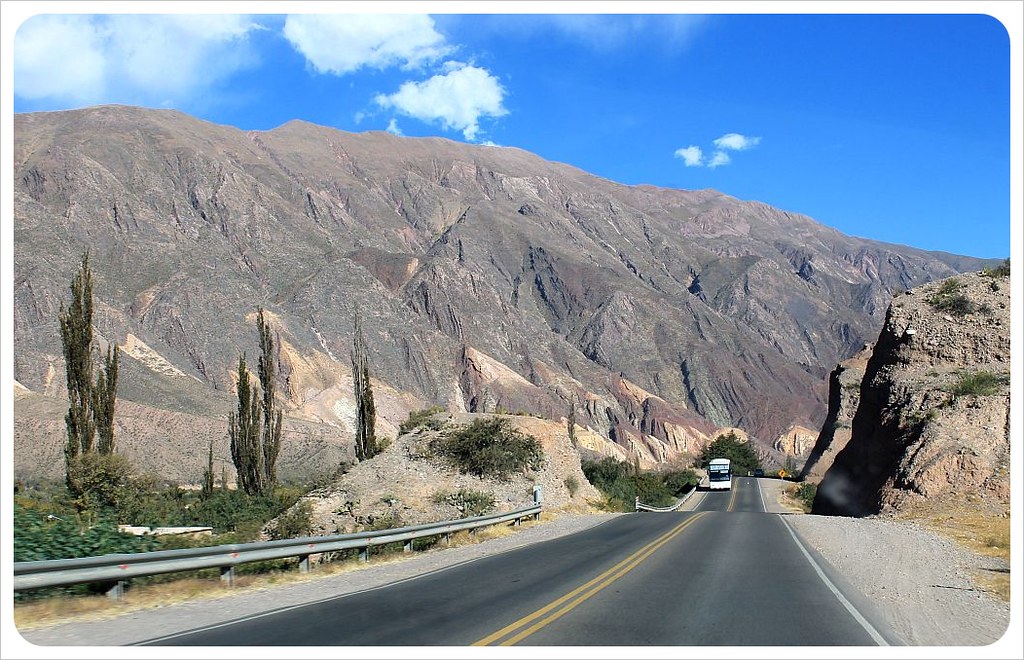 Normally we would never pick up a hitchhiker, but fate stepped in to force us to meet this particular Argentine, who was on his first day of an infinite journey in the opposite direction. He had just flown up from Buenos Aires to Salta that morning and our paths crossed at the highway turn off to our first stop, the village of Pumamarca. After suddenly being thrust into a day of hitchhiking ourselves in Patagonia (read about how we hitchhiked to the end of the world) just the month before, we felt we had to re-pay our debt, and Hernan’s big smile made us pull over that day.
Normally we would never pick up a hitchhiker, but fate stepped in to force us to meet this particular Argentine, who was on his first day of an infinite journey in the opposite direction. He had just flown up from Buenos Aires to Salta that morning and our paths crossed at the highway turn off to our first stop, the village of Pumamarca. After suddenly being thrust into a day of hitchhiking ourselves in Patagonia (read about how we hitchhiked to the end of the world) just the month before, we felt we had to re-pay our debt, and Hernan’s big smile made us pull over that day.
 In the car, he shared his story and his goal of making it overland from Argentina to Mexico that year by busking with his guitar, and his eyes lit up when we shared our story of traveling for three years straight – confirmation that his own dream to live freely wasn’t so crazy after all.
In the car, he shared his story and his goal of making it overland from Argentina to Mexico that year by busking with his guitar, and his eyes lit up when we shared our story of traveling for three years straight – confirmation that his own dream to live freely wasn’t so crazy after all.
Pumamarca and the Sierra De Siete Colores
We separated for a bit once we arrived in Purmamarca; Hernan checked into his hostel and we wandered around the center, bargaining for a few little textiles in the market before meeting back up to hike around the Sierra de Siete Colores, or seven-colored hill. If, as a kid, you ever colored sand with chalk and then filled it in, layer by layer, into a glass jar, you’ll have a good idea of what this hike looked like.
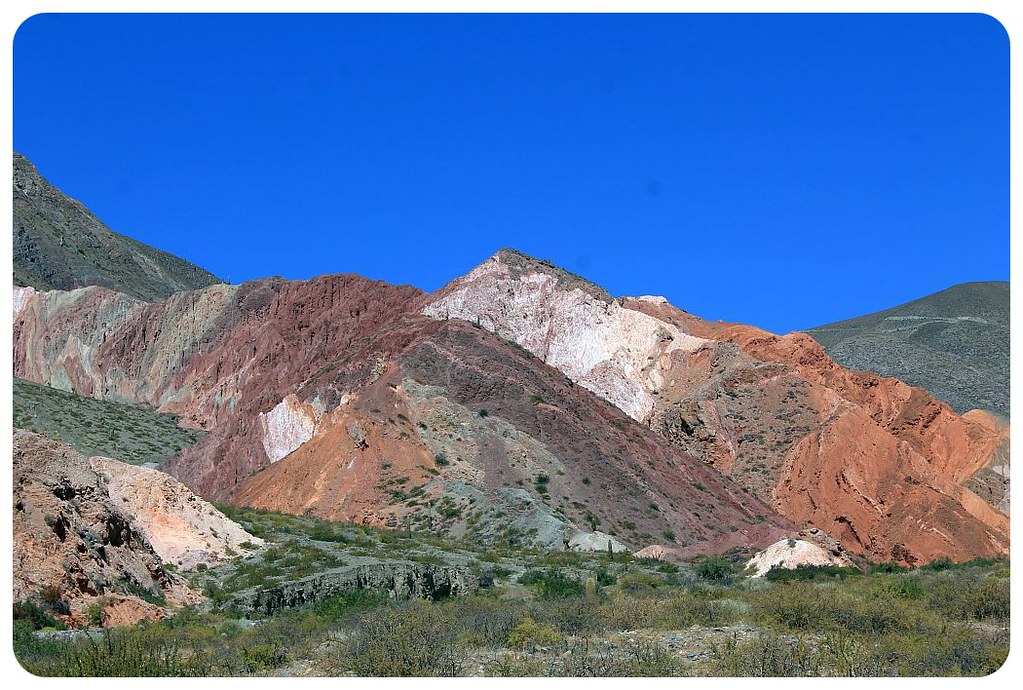
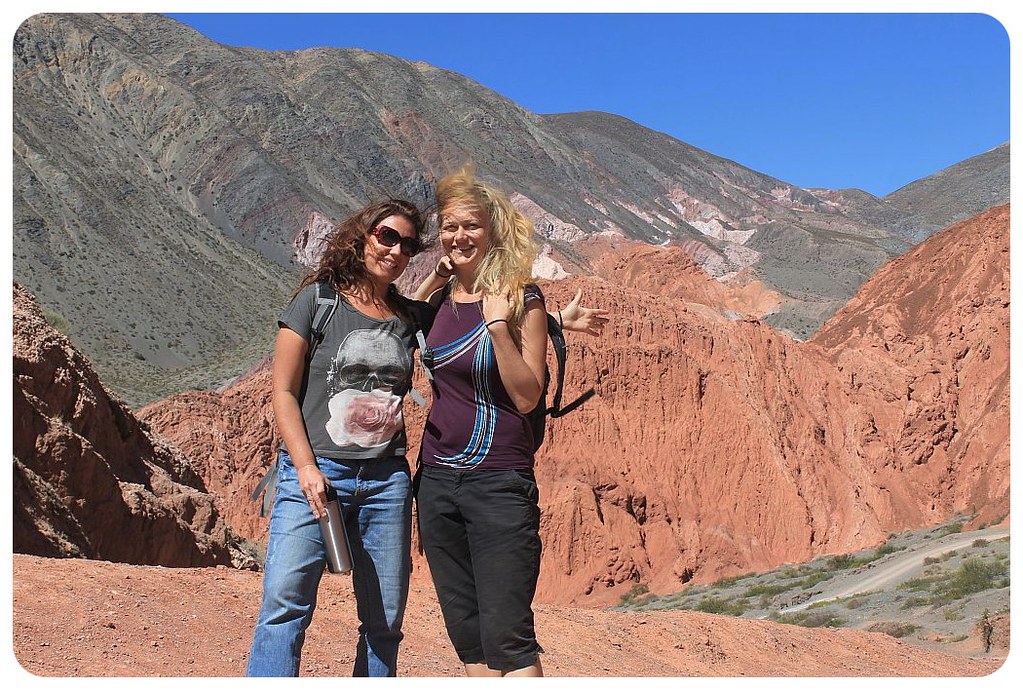
 Together we ate empanadas at a wooden table in a dark, dusty restaurant and drove up over the mountains out to the salt flats. It may have seemed like a favor to pick him up, but we put Hernan to work. He became our own personal photographer as we jumped and karate-chopped through the air, hopped inside our hats and played around with the amazing visual possibilities out on these massive expanses of bright white salt as far as the eye can see.
Together we ate empanadas at a wooden table in a dark, dusty restaurant and drove up over the mountains out to the salt flats. It may have seemed like a favor to pick him up, but we put Hernan to work. He became our own personal photographer as we jumped and karate-chopped through the air, hopped inside our hats and played around with the amazing visual possibilities out on these massive expanses of bright white salt as far as the eye can see.
Argentina’s stunning Salt Flats
These salt flats are actually minuscule compared to Bolivia’s famous Salar de Uyuni just 150km over the border. However, it was also so beautiful that we didn’t mind driving right through it all again just two days later on the road that leads to the highest desert in the world and our next stop: Chile’s Atacama Desert.
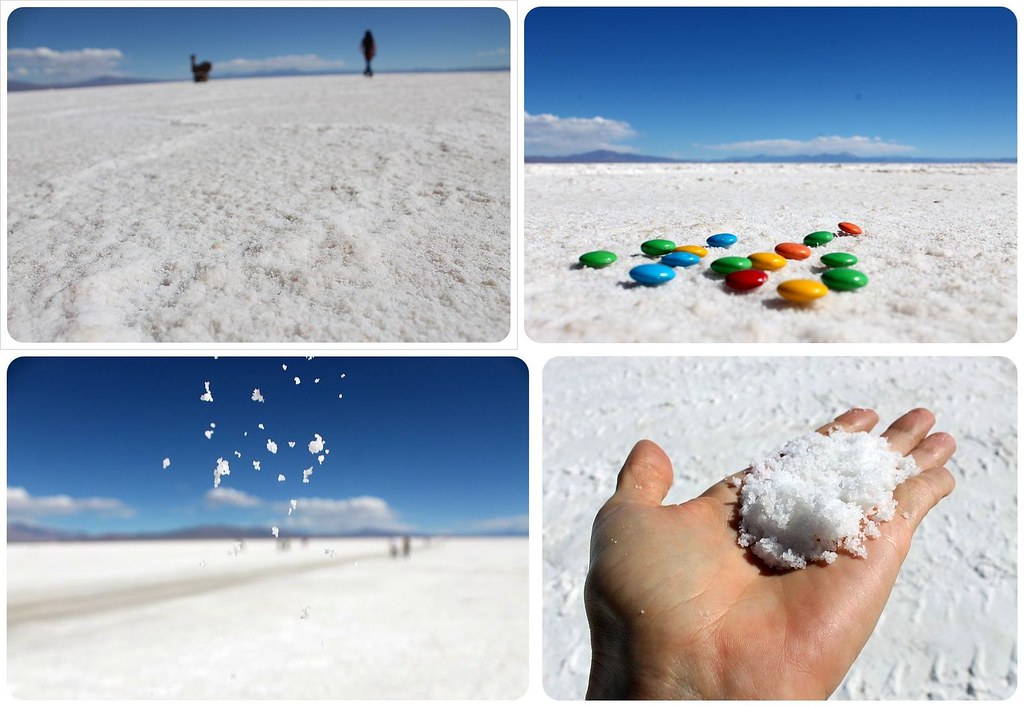 As the slanted sun shot diagonal rays across the afternoon sky, we made our way back over the mountains, woke up our new friend, dropped him back at his hostel and headed on to spend the night in nearby town of Tilcara.
As the slanted sun shot diagonal rays across the afternoon sky, we made our way back over the mountains, woke up our new friend, dropped him back at his hostel and headed on to spend the night in nearby town of Tilcara.
Tilcara – 2,500 meters above sea level
Just 85km from Jujuy, Tilcara is a compact grid of colonial style buildings, cobblestone streets and a dusty indigenous feel. Time in Tilcara was short since we headed off first thing the next morning to continue the trip, but we managed to have a deliciously typical dinner of quinoa and empanadas and feed two stray dogs a meal of street food as we took a chilly evening stroll around the town that sits 2,500m / 8,200 feet above sea level.
Near Tilcara is the Purcara de Tilcara, partially reconstructed pre-Inca ruins, but we opted to stop instead the next morning in Uquaia, a roadside village famous for its 17th century church – for a very interesting reason. The paintings lining the walls inside feature several saints, each wielding rather large weapons. When we first arrived, a tour bus engine was loudly idling but within minutes the entire busload of Argentine seniors shuffled out into the makeshift market area in front and we had the church to ourselves to ponder this oddity before leaving for Humahuaca.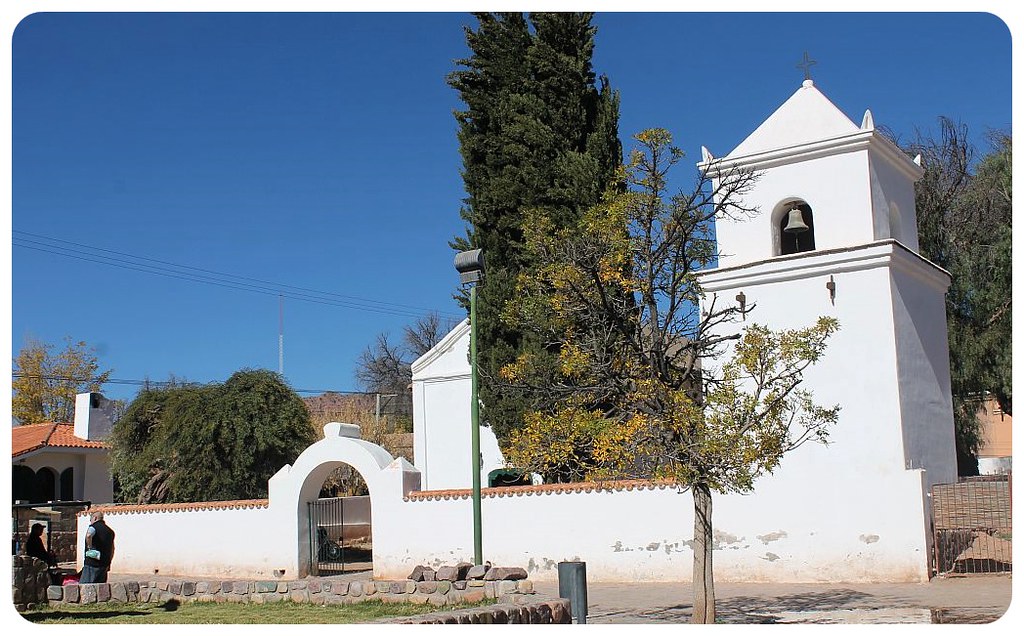 On the road to Humahuaca, we must have stopped 50 times for photos, most often when guanacos (cousins to llamas and alpacas) gracefully galloped across the highway, winking their way up into the Andes foothills on the other side. In the flatter valley areas, the earth is a coppery orange-red, dotted with every imaginable shade of green. The mountains that jut up out of them are every color imaginable, forming almost a rainbow of reds, yellows, even blues and deep purples. Around each turn comes a new design as if painted by an abstract landscape artist.
On the road to Humahuaca, we must have stopped 50 times for photos, most often when guanacos (cousins to llamas and alpacas) gracefully galloped across the highway, winking their way up into the Andes foothills on the other side. In the flatter valley areas, the earth is a coppery orange-red, dotted with every imaginable shade of green. The mountains that jut up out of them are every color imaginable, forming almost a rainbow of reds, yellows, even blues and deep purples. Around each turn comes a new design as if painted by an abstract landscape artist.
Humahuaca =Indigenous Culture
Humahuaca is much more like Bolivia than Buenos Aires – from the indigenous residents to the piles of bright textiles for sale up and down the streets. La Quebrada de Humahuaca feels like Bolivia today or Santa Fe, New Mexico two hundred years ago, but it most certainly feels unlike anywhere else in Argentina. Because we only half a day here, we shopped up and down the streets, climbed up the Monumento de la Independencia and had piles of vegetarian empanadas. We made sure to walk the length of the local market as well before heading back to the car.
And then, it happened. Our little white rental was dead.
We turned the key over and over, pumped the brakes, but it sat, motionless, a hunk of metal on a side street just off the market street. One of us (who has chosen not to be named and blamed) may have left the lights on, which drained the battery.
Without wanting to draw unwanted attention to being two gringas in need, I casually asked a couple of taxi drivers nearby if they could give us a jump. They laughed. ‘No one will help you here. Not for free. We are poor here, this is not Buenos Aires.’ They shrugged and went back to their conversation, not even allowing me to elaborate, bargain or enlist their help. I got the feeling that it had nothing to do with the money. They just couldn’t have cared less.
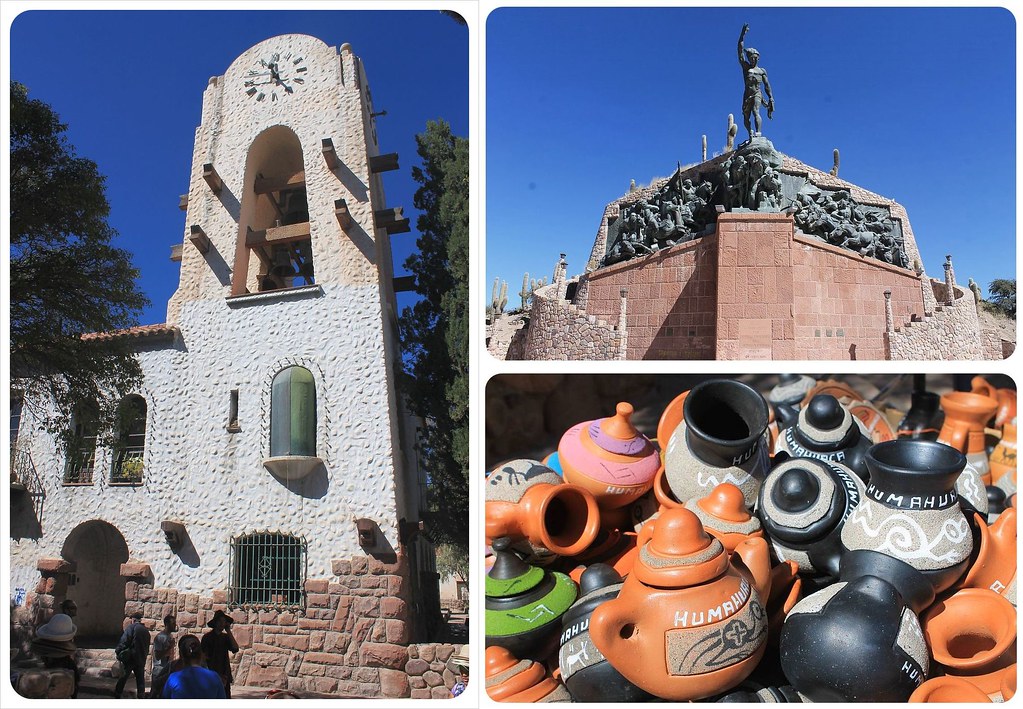 Eventually I got it out of one taxista that a garage was right up the street, but it was closed. Until when, I asked, to which I received an apathetic shoulder shrug for a reply.
Eventually I got it out of one taxista that a garage was right up the street, but it was closed. Until when, I asked, to which I received an apathetic shoulder shrug for a reply.
After just a few attempts of flagging down someone to help us push the car up the road to the mechanic, an SUV with two older couples stopped, the husbands got out and helped us push the car to the garage. 30 minutes and 30 pesos ($6) later, what had seemed like a major emergency was quickly solved and we were back on the road for our three-hour drive back to Jujuy.
Back to Jujuy – the scenery seemed so different!
On the way back it was just the two of us, no new friends, no hitchhikers. The scenery seemed entirely different. The sun was setting; golden light hit the back of the mountains with views, colors and shadows entirely different to our morning drives in the opposite direction. Back in Jujuy, the thumping beats of the city’s congested streets snapped us out of our dream state, but much of the magic of those two days has stuck with us ever since.
Travel tips for a Quebrada de Humahuaca road trip
- Rent a car in Jujuy or Salta. We rented from Hertz for 717 pesos / US $140 for two days.
- Plan in at least 2-3 nights and stay in Purmamarca, Tilcara and Humahuaca in order to give you more time to soak up the scenery.
- If you don’t want to rent a car, you can take a bus to Purmamarca or Humahuaca and base yourself there. There are tours you can book to visit the sites – photo stops and spontaneity are reduced, however.
- The quality of the roads is good, and easy to drive. Even if you don’t speak Spanish, signage is easy to follow to Humahuaca.
- Main sights are the Sierra de Siete Colores, the ancient Pucara fortress near Tilcara, Uquia and Yavi churches, the Purmamarca market, Iruya village and Humahuaca.



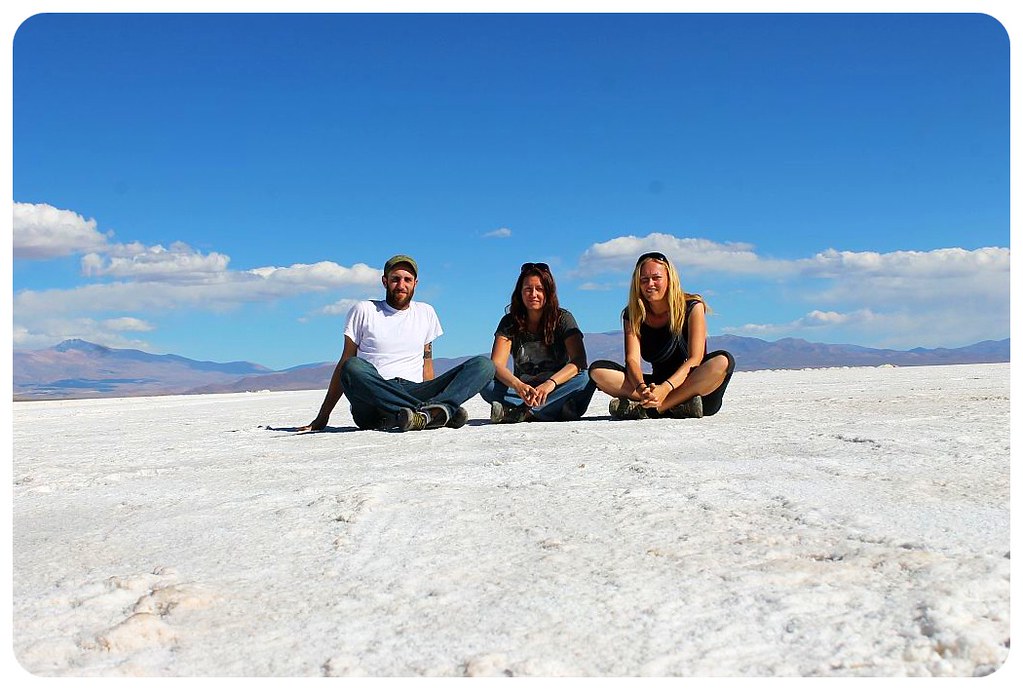
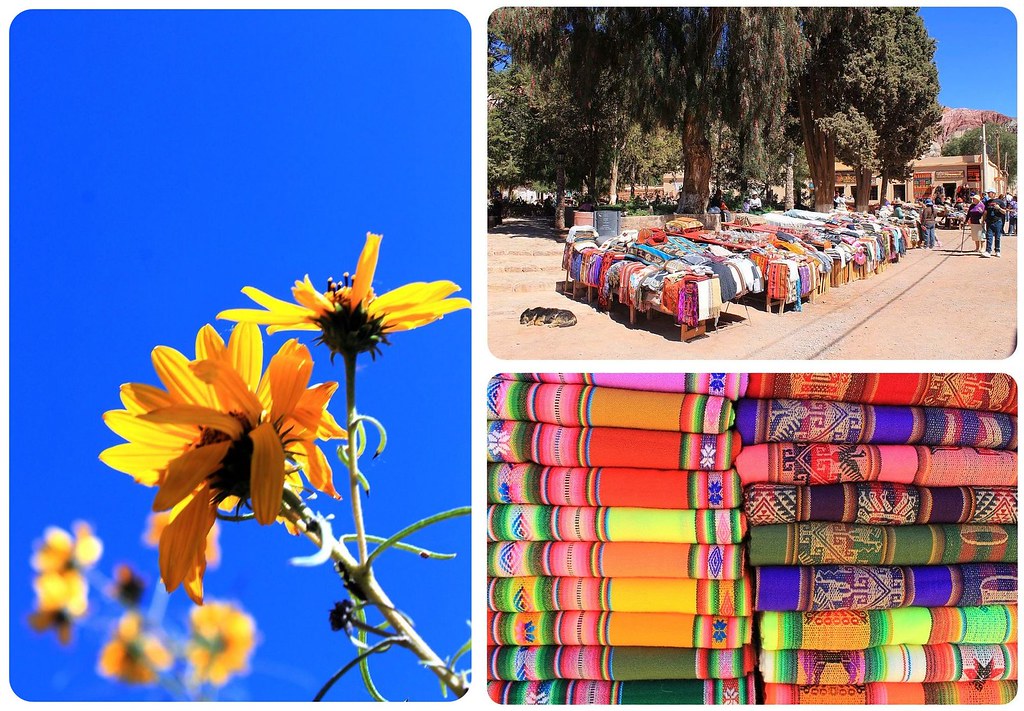
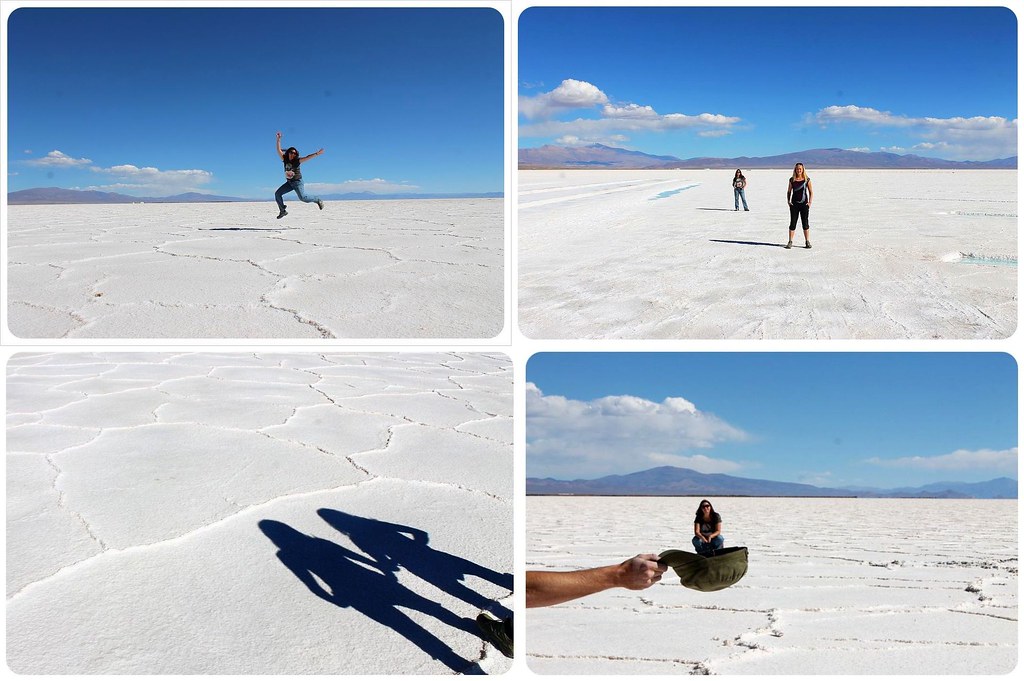
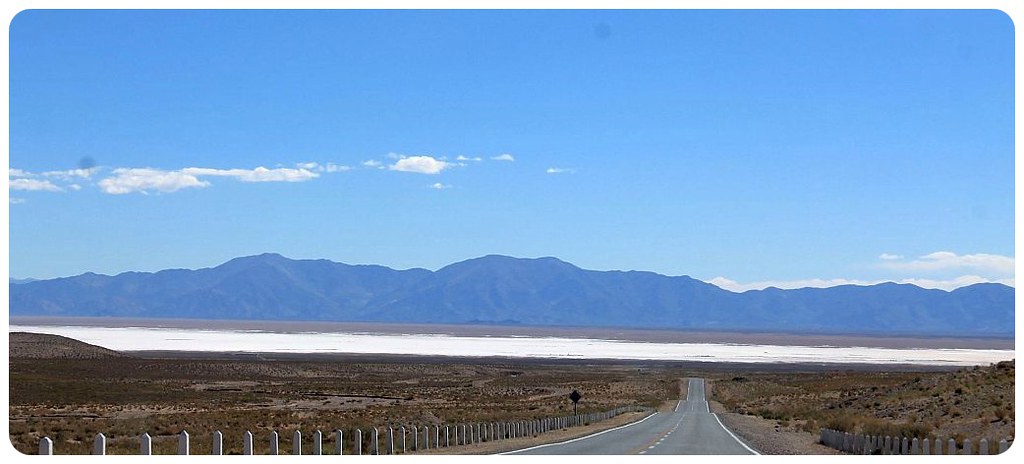
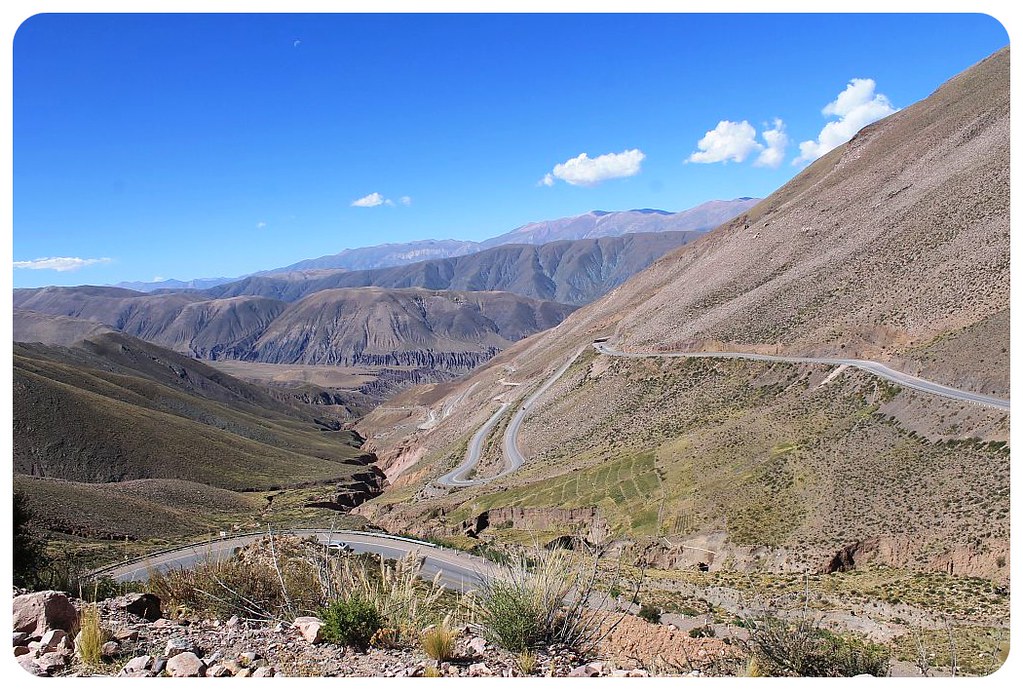
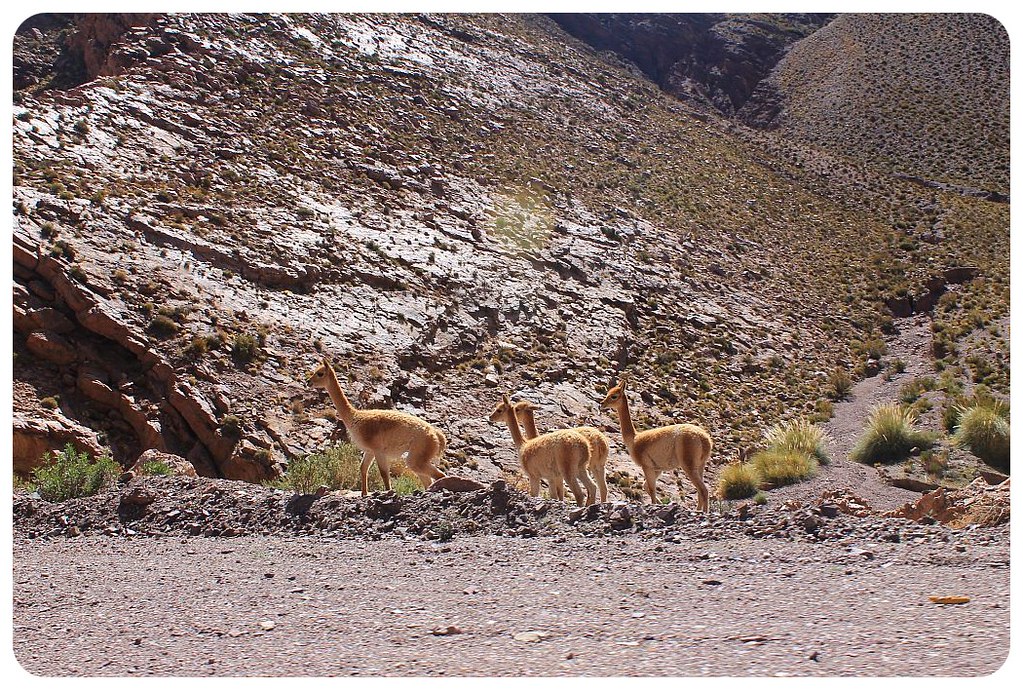


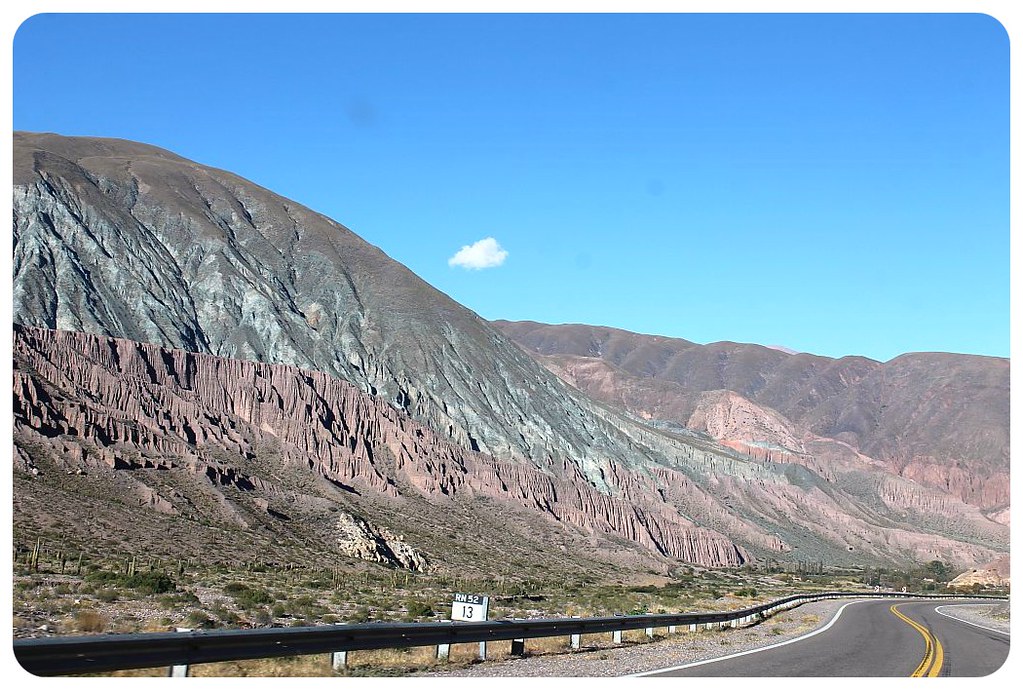
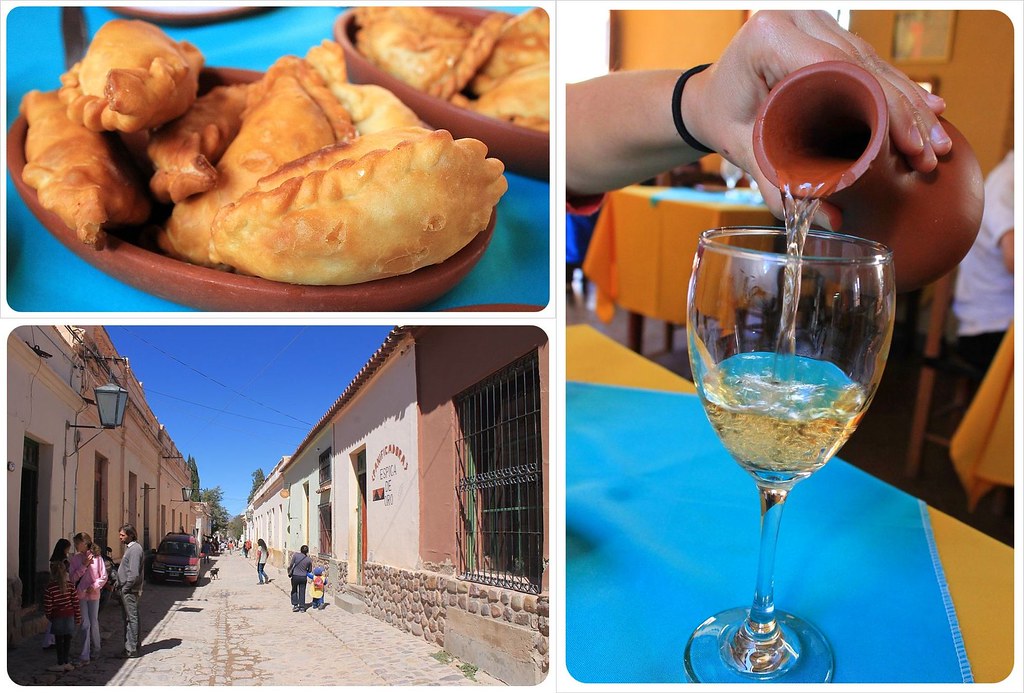
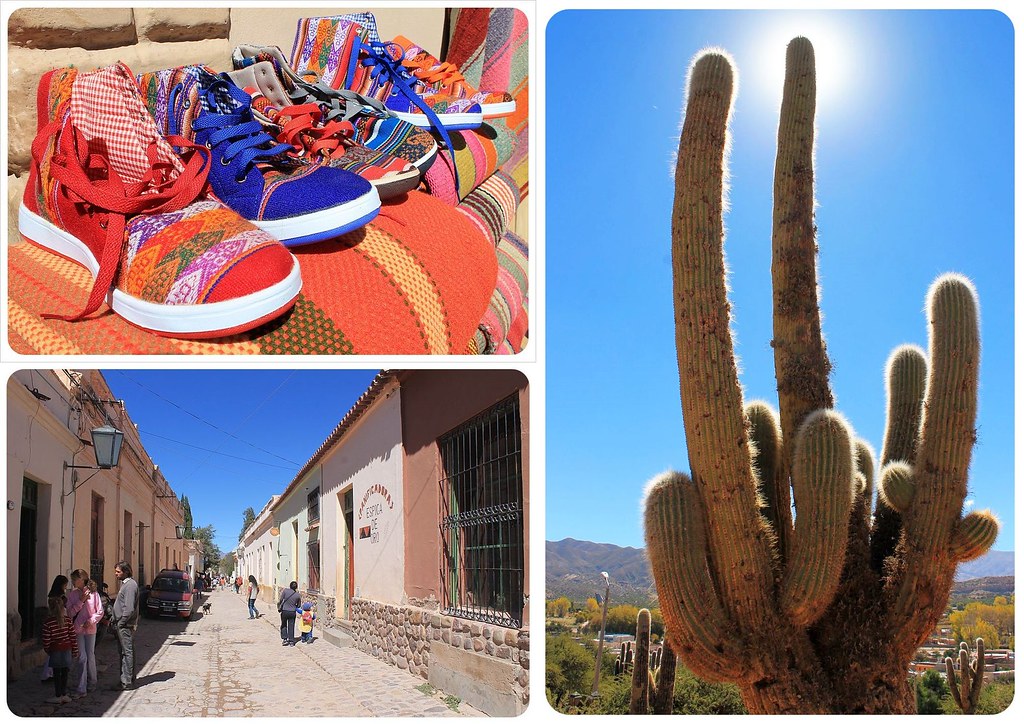
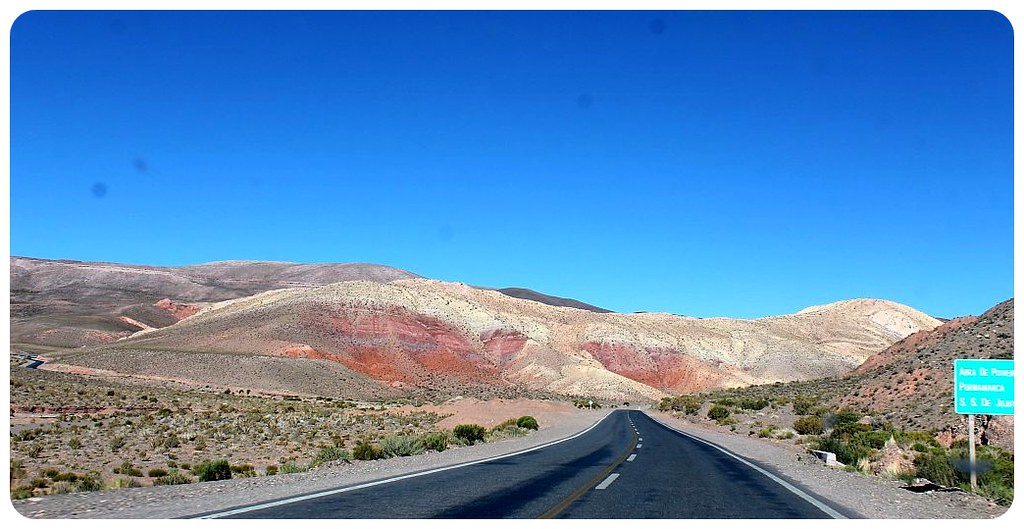
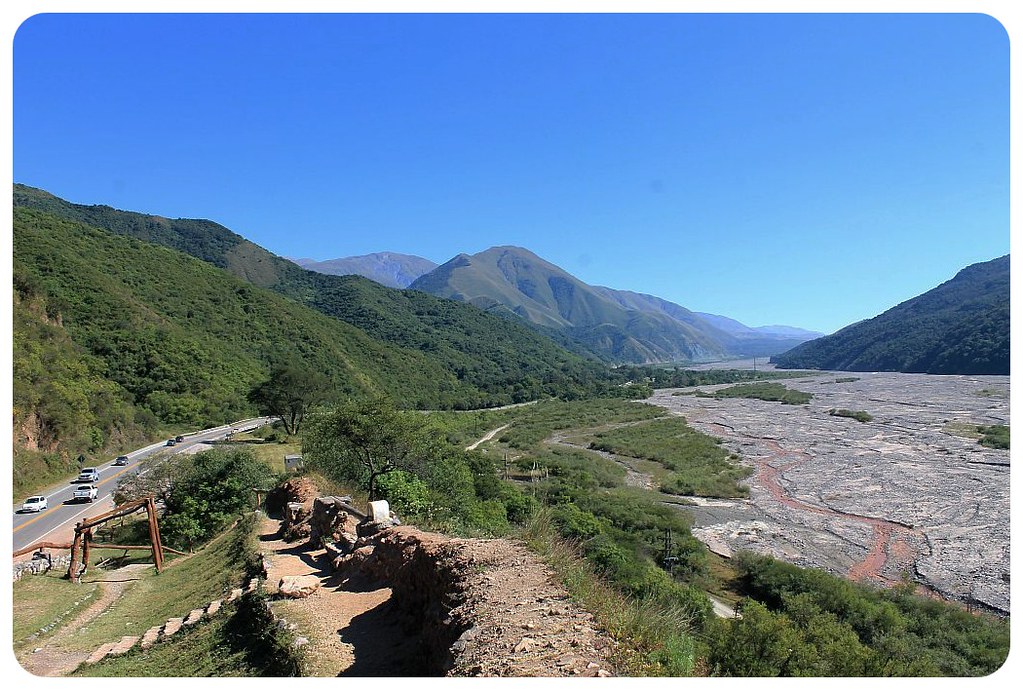
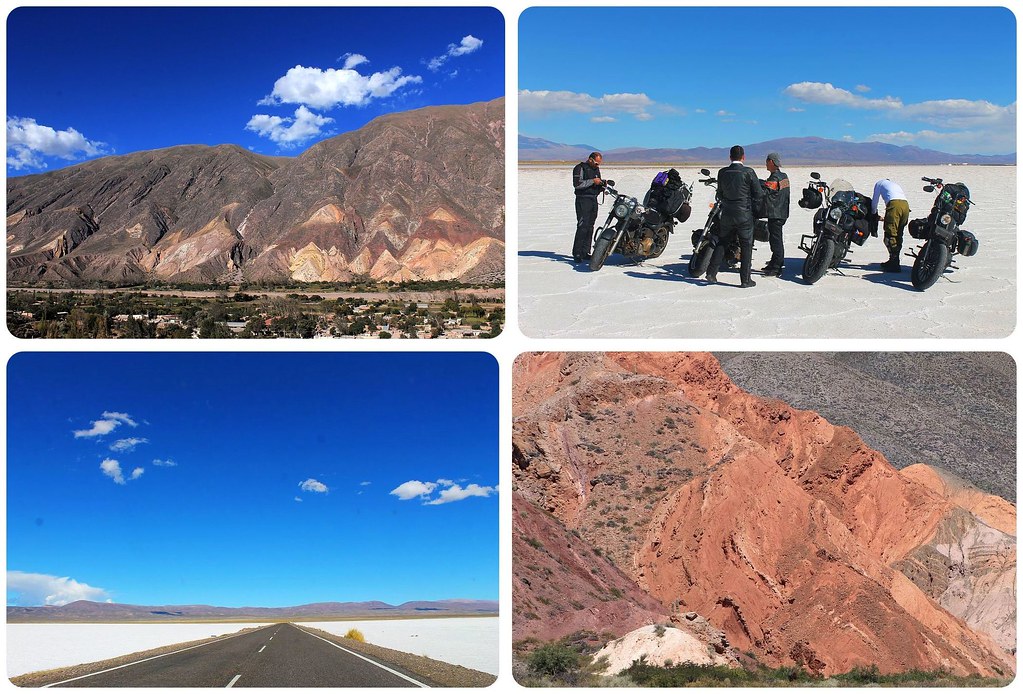
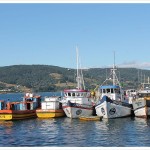
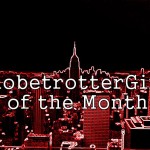
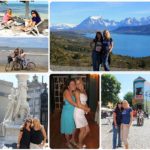

Alex | Partial Parallax
Tuesday 22nd of October 2013
Looks like a fantastic road trip the salt flats look awesome and the scenery generally looks breathtaking. It's a shame the car died but at least it was sorted easily!
Dani
Tuesday 29th of October 2013
Alex - yes, definitely one of the best road trips we've taken! The salt flats alone were well worth renting the car and going out of the way for!
SnarkyNomad
Saturday 19th of October 2013
I really want to do a motorcycle trip or something like that, but I don't know if it'll ever happen. Lots of logistical issues to take into consideration, such as these. But it seems like great fun, if you can get the planning and problems solved.
Dani
Tuesday 29th of October 2013
It is doable though - we saw quite a few motorcyclists in Argentina and Chile. It's definitely a popular route, I think a lot of people are driving the route that Che Guevara did :)
Kathryn
Friday 18th of October 2013
Such wonderful photos and I'm glad to hear you put Hernan to good use. I too had grave concerns for his life for a moment there! I've recently come back from a road trip around Sardinia which was amazing if not quite as exotic!
Jess
Friday 18th of October 2013
Maybe Sardinia isn't quite as exotic, but that is somewhere way high on our list where we haven't been yet, and now we'll have to rent a car, too :)
TammyOnTheMove
Wednesday 16th of October 2013
I really thought Hernando dies for a second. Glad it was only the car. :-) Such a shame that the taxi drivers were so unhelpful and greedy. I am glad you found a helping hand after all.
Jess
Friday 18th of October 2013
No, Hernan was fine - and also, I wish he'd get in touch! He has all our contact info and I'd like to know how far he's gotten on his travels!
Carmen Allan-Petale
Wednesday 16th of October 2013
What an adventure! Love your photos. We are going here next year, can't wait!
Jess
Friday 18th of October 2013
Awesome, have a great time - the car hire was expensive, but we both felt like it was totally worth it!